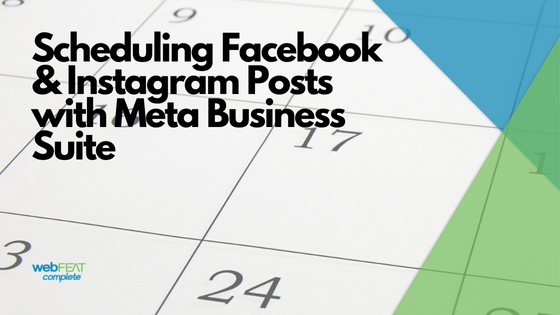We are back with part 3 of our E-Commerce SEO Guide series focusing on the subjects of content and user experience (UX). Given these topics are rather broad, we are going to discuss how content and UX can improve rankings for product pages. We will worry about product categories and other webpages for a later post. Before we get started if you missed Part 1 or Part 2 be sure to check those articles out!
Content Strategies for Improving Ecommerce Product Pages
Product Descriptions and On-Page SEO
Descriptions for your products are an important part of the e-commerce ranking process. Here, you are able to use other variations of product keywords that you might not have been able to squeeze into your page title and URL. A great strategy for determining what needs to be included in your product descriptions is to review your competition and the product pages showing up on page 1. Here are a few questions to ask yourself when reviewing your competition:
- What keyword variations are they using?
- How many H2s, H3s, etc. are on the page and what are they?
- Do they include product specifications like dimensions, colors, etc.?
- Is there an FAQ section?
- Are SKUs, serial numbers, model numbers, etc. used to find a specific product?
Once you have researched your competitors’ content, compare it to your own. What’s missing? What can you add to your page that your competition isn’t utilizing? The next content strategies we are going to discuss might generate some ideas for you.
Product PDF Optimization
If your business operates in a technical industry and customers often need additional information about product installations, specifications, and other pertinent details, PDFs are likely a good idea and oftentimes rank quite well in the search results. Google has been able to index and crawl PDF files since 2001. However, PDFs always seem to be the pages businesses forget to optimize, creating a great opportunity for you to outperform your competitors in the search results. 9/10 times I visit a PDF link in the search results there is zero internal linking back to the main website. In other words, users land on a PDF, receive the information they need and bounce. Wouldn’t it be great if you could push these users to your main product page so that they can make a purchase or request a quote right then and there? In many cases, websites have high performing PDF files, but their product pages aren’t ranking well so users visit the PDF, bounce, and then visit an entirely different company’s product page to complete their checkout. Bummer… but I have a simple tip for you to help eliminate this issue from occurring: Add your company logo and product page URL to the top of the PDF file. You can take it a step further by adding UTM tracking to the link so that you can track how many users visited your product page from the PDF.
For those who have PDF files that aren’t ranking well, here are a few tips to start appearing in the search results:
- Optimize the file name of your PDF to include specific keywords relevant to your product. Be sure to space out each word with a hyphen so that Google can easily read the file names.
- Optimize the page title of your PDFs, similar to how you would optimize your standard webpages.
- Ensure your PDFs are utilizing plain text and not images. Many PDF files are made up of images with text inside of them, making it more difficult for Google to read the content.
Product Infographics
In many cases, web visitors can benefit from infographics about your products. Infographics could be created in the form of tables, charts, fun and informative graphics, and much more. Depicting product specifications and color types in an organized, visual way can improve the time users spend on a product page and make them that much more likely to purchase from you, for example. These infographics are also great tools for promoting your products on social media and earning backlinks from other websites who find your graphics beneficial.
Product Images
Obviously you will want to include images of your products to help users better understand the product they will be purchasing. You can refer to Part 1 of the Ecommerce SEO Guide to better understand how to optimize images for SEO with things like image size, ALT tags, and quality.
Again, you’ll want to analyze your competition to see what type of images and features they are using. If your competitors have 360-degree interactivity with product images, you’ll want to figure out how to implement this on your website. The Ecommerce landscape is competitive and the least you can do to improve your product rankings is to utilize the best features of your competition.
Product Blog Pages
You probably predicted blogs would be included in this article and you were right. The ability to answer questions potential customers might have about your products or industry grants your business authority and expertise as well as improves keyword rankings. For every product you offer on your e-commerce website, there are likely hundreds of potential content topics. Well written blogs can lead customers down a purchase funnel without them even knowing it. Of course, you’d love for every user to search for your product, visit the product page, and check out – but this just isn’t realistic. Customers are going to do their research, visit a number of different websites, and find opinions from others across the web. Writing blogs allows you to meet your customers during the beginning stages of their buying journey and lead them to your products. A well-crafted blog could be the reason a customer chooses you over one of your competitors.
User Experience for Product Page SEO
User Experience is a vital part of a high performing e-commerce website. You want to make your customers’ checkout experience memorable for the right reasons. Here are a few tips for achieving this:
Limit the Number of Checkout Steps
You want your customers to be able to checkout in as little clicks as possible. You can do this in many ways such as:
- Instead of making customers view their cart before beginning the checkout process, give them an option to do both. This way, if they know they only need a single product they can immediately click on checkout and begin completing their order.
- Allow users to check a box so that their shipping address fills out their billing details as well.
- If your website allows discount codes, make it easy for users to input this during the checkout process. In other words, don’t create a separate page for discount codes, just embed it on the first page of checkout.
- Give users the option to checkout without creating an account. You can reach out to them about creating an account after they have checked out in a follow up email or on the final thank you page.
Make the Product Page Interactive
You can do this by adding features to your product pages such as:
- 360-degree images and photos that change colors or sizes when customers select a certain product specification.
- Adding videos to your product pages so users can see your products in action. (Be sure these videos are compressed and not slowing down the load times of your website)
- Link to internal resources that might help a customer decide to choose you over a competitor. An internal resource could be a product PDF, blog post about your product, or a customer service page that portrays the value add of purchasing from your company.
Add Related Products to Product Pages
Inherently, this can feel salesy, but at the end of the day, you want to satisfy your users. If you feel a customer would benefit from an additional product then adding related products to your website is a good idea. For example, if you sell drills and drill batteries separately, having a related product for a battery is a great idea. This eliminates the extra steps a customer would need to take in order to search through your website to find the battery and add it to their cart.
Interested in learning more?
Revisit Part 1 and 2 of our E-Commerce SEO Guide Series
Part 1: Data Tracking, Long-Tail Keywords, and Image Optimization
Part 2: URL Structure, Strategic Linking, and Backlinks
“”





